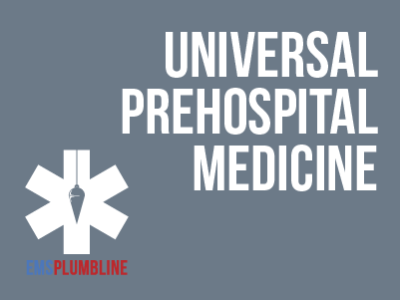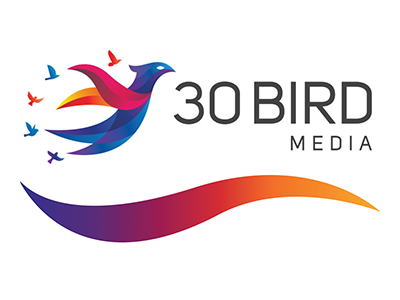 |
Business Finance: Portfolio Risk |
0.75 |
This course will focus on how to use the diversification principle to invest in portfolios as well as how to use the Capital Asset Pricing Model. You will also learn how to calculate different types of financial ratios. |
 |
SARS: Protecting Workers |
0.17 |
This course covers how employers should keep their employees safe who are possibly exposed to SARS. This course also discusses general safety measures for workers in industries with the highest risk of coming in contact with SARS. These include healthcare workers, laboratory workers, and airline personnel. |
 |
Commotio Cordis |
1.00 |
Paramedic Instructor Peter Bonadonna discusses his thoughts on Commotio Cordis in an effort to orient EMTs that are not familiar with the phenomena. |
 |
Mobile Equipment |
0.50 |
This course covers how to identify and avoid hazards associated with mobile equipment in the workplace. You will be able to identify the common hazards and take the necessary steps to prevent them. |
 |
Instructional Planning for Paraprofessionals |
0.50 |
This course covers the instructional responsibilities of a paraprofessional in the classroom. It is just one of many paraprofessional courses we offer. This course will help you understand what your role as a paraprofessional is in supporting students through instruction and how to support teaching and learning. |
 |
Managing Performance: Performance Improvements |
1.34 |
In the performance appraisal process, there are three steps you must complete before you can help an employee make performance improvements.
1. Appraise an employee’s performance
2. Conduct an appraisal discussion
3. Help an employee make performance improvements
In this course you will learn to: plan performance improvements, handle performance problems, and use effective communication to solve performance problems, conduct status meetings, and maintain documentation of ongoing communication. |
 |
Freelancing 101 |
1.25 |
This course covers the fundamentals of freelancing. Freelancing offers independence, letting individuals choose their projects and schedules, while still providing diverse opportunities to explore different industries and build a flexible career. However, it also entails managing finances, client relationships, and the challenges of inconsistent income. |
 |
Preventing Sexual Harassment and Understanding California Law (Corrections) |
0.50 |
This course will teach California employees how to recognize sexual harassment, defines the rights and responsibilities of employers and employees, and provides an overview of the legal remedies available in sexual harassment lawsuits. |
 |
Expedition Ocean: Module 1 Teacher Version |
1.00 |
|
 |
Creativity and Innovation: Personal Creativity (Instructor Guide) |
1.34 |
Creativity is often considered a talent that some people have. Actually, creativity's a skill that everyone can nurture through exercise and practice. You can prepare yourself both mentally and physically to be creative.
In this course you will learn to: prepare yourself mentally and physically to be creative, and use your experiences, innocence, intuition, and sense of adventure to increase your creativity.
This Instructor's Edition of this course includes notes and suggestions to assist you in presenting the material, whether in an in-person classroom setting, or as an instructor-led online or distance-learning course. It also provides you with the answers to questions found in mid-lesson activities, as well as in the quiz that concludes the course. |
 |
Money Basics |
2.00 |
In this course, you'll learn tips for creating a budget, staying out of debt, managing bank accounts, planning for retirement, and buying a home. |
 |
Basic Health & Safety Requirements for Certification |
6.00 |
Best practices and standards for health and safety are the foundation of quality child care. Meeting the basic health and safety needs of all children sets the stage for positive child outcomes.
This health and safety orientation module provides an overview of the basic health and safety requirements and best practices in nine of the topic areas outlined in the Child Care and Development Block Grant (CCDBG) Reauthorization of 2015. The topics are as follows:
Safe spaces; Transportation safety; Handling and storage of hazardous materials; Emergency preparedness; Prevention and control of infectious disease; Food and allergic reactions and how to respond; Administration of medication; Shaken baby syndrome/abusive head trauma; Safe sleep and SUIDS prevention.
This course is designed to meet your professional development needs. It can be taken as a stand-alone learning event, or as part of a broader early childhood education curriculum. In addition to state child care regulations, there may be other health and safety measures required by your municipality, township, or county. Check with county or local offices for information on local health and safety requirements. |
 |
Sales Skills: Advanced: Effectively Closing a Sale |
0.75 |
This course will focus on demonstrating the benefits of your product or service to others, confirming the client’s commitment by recognizing and responding to signals, and closing the sale and following up with the client. |
 |
Managing Performance: Legal Appraisals |
0.84 |
In this course you will learn to: identify legal appraisals and responsibilities in relation to laws enforced by the EEOC, and identify risks of legal challenges and the importance of maintaining positive communication. |
 |
Koalas |
1.00 |
This course provides an introduction to koalas, including an overview of physical characteristics, habitat, behavior, reproduction, and conservation. |
 |
Building Relationships with School Personnel |
2.00 |
School-age programs and schools share a mutual goal of supporting the growth, development, and learning of school-age children. Over 50% of all school-age programs nation-wide are housed in school facilities. When school-age programs are housed in school facilities, it is essential for staff in school-age programs to establish and maintain a positive relationship with school personnel. This makes it possible for schools and programs to work together to support the needs of the whole child. Staff can develop successful partnerships with school personnel by cultivating an understanding of the needs, interests, and goals of school personnel and using effective strategies, tools, and systems to build a spirit of positive collaboration and communication. |
 |
GED: Social Studies - Unit 3: Economics |
1.00 |
Welcome to Unit 3: Economics. Economics accounts for about 15% of the questions you'll see on the test. In this unit, we'll cover the basics of both micro and macroeconomics. We'll work with graphs, and we'll explore consumer economics. |
 |
Creativity and Innovation: Fostering A Creative Environment (Instructor Guide) |
1.00 |
Creativity is the ability to look at a situation from every possible angle and determine potential ideas, solutions, or outcomes. Employees with this ability add value to an organization by increasing its efficiency and productivity. This is why board members, stockholders, managers, and other employees want to recruit and retain creative individuals. Everyone in an organization benefits from the recruitment of creative people.
When a candidate begins to search for a job or becomes aware of available positions, the candidate will form an opinion about your company based on promotional material, media articles, stories, and word-of-mouth. Creative people look for flexibility. Although managers might hire creative people, some managers still tend to stifle employees’ creativity with excessive rules and directions. Creative candidates must believe that they will have the flexibility to be innovative, or they will look elsewhere for employment.
In this course you will learn to: recruit and retain creative individuals, and maintain a creative environment.
This Instructor's Edition of this course includes notes and suggestions to assist you in presenting the material, whether in an in-person classroom setting, or as an instructor-led online or distance-learning course. It also provides you with the answers to questions found in mid-lesson activities, as well as in the quiz that concludes the course. |
 |
Pneumothorax and Hemothorax for EMTs |
1.00 |
Paramedic Instructor Peter Bonadonna discusses some of the most life threatening chest injures. |
 |
PMP® Certification: Passing the 2021 Exam - Exam Prep |
1.00 |
Exam Prep to accompany 30 Bird's PMP® Certification: Passing the 2021 Exam course. |
 |
Sales Skills: Advanced: Developing a Winning Strategy |
0.50 |
This course will focus on examining consulting strategies and developing solutions for clients. |
 |
Customer Service: Greeting Customers |
1.00 |
Answering the phone when you know that you might be on the wrong end of a verbal confrontation is difficult, but it’s the first step in dealing with customer service issues. How you answer the phone will set a tone with the customer on the other end. Greeting a customer requires much more than a simple “Hello, how can I help you?” |
 |
What's Bugging You? Communicable Diseases |
0.17 |
This course covers common communicable diseases, how they enter the body, and how certain policies can aid in lowering the likelihood of transmission. |
 |
School-Age Care as a Family Service: Emphasis on Planning Opportunities for Family Involvement |
2.00 |
The foundation for getting parents involved in school-age programs is to keep parents well informed about what is happening in the program. Quality programs also provide parents with opportunities to make suggestions and give feedback on program services through suggestion boxes, feedback forms, and surveys. When parents are encouraged to have input in the program, they develop trust and confidence in the program, and feel a sense of pride and ownership. They are more likely to participate as resourceful partners with program staff when they know their ideas are welcome and valued. Finally, because parents are all different from each other, it's important to provide many different opportunities for them to connect with the program. Staff in quality school-age programs recognize that all parents don't have to be involved in the same way. |
 |
GED: Reasoning Through Language Arts - Unit 7: The Extended Response |
1.00 |
Welcome to Unit 7: The Extended Response. The last part of the RLA section is the Extended Response, or essay. Here's how it works. You'll be given something to read - a source text or texts - and asked to write an essay in response to a prompt related to the reading. In this unit, we'll learn about two types of essays and take a look at an example of each one. |


























